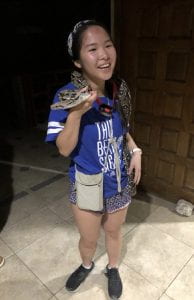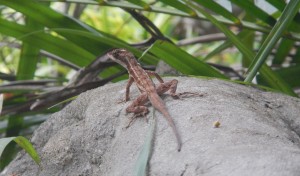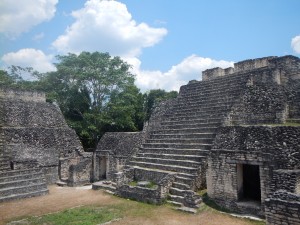Bye Las Cuevas Research Station! Thank you for your hospitality—I will miss you and the food dearly!
Class imitating our favorite animals—mine is a butterfly, not an owl.
We took the morning and afternoon to explore the ATM (Another Tourist Missing) cave, where we were able to see the remains of human Mayan sacrifices, Mayan pottery, and stunning rock formations while swimming with fish in the caves. To reach the cave, we crossed three rivers/streams in gear. The entrance to the cave was a pool which we also had to swim through. Water within the cave was cool and refreshing in contrast to the heat outside. The cave constricted at certain points, and we were forced to crouch or turn sideways. We also climbed rock formations to reach certain chambers. Throughout the tour, the guide told us about the history of the caves and the Mayan culture associated with the caves. Mayans sacrificed blood (from the Mayan king) and—in times of desperation—human males of all ages in a bid to ensure rain and good harvest. I participated in the blood-letting ritual when I scraped my shin on a rock. If it rains tomorrow, that means that the Mayan gods must enjoy my blood. The tour of the cave took in total about 4 hours, and, by the time we were out, I was famished.
We drove another hour and a half to the Tropical Education Center (where we are staying the night), then had a nighttime tour of the Belize Zoo.
Some cool things that I observed/experienced during the tour:
-was ‘hugged’ by a boa constrictor
-fed and pet a tapir
-stood less than two feet away from a jaguar and a puma
– pet a kinkajou
Me holding a boa constrictor
Today was full of amazing experiences and I am excited for tomorrow—the reef!





